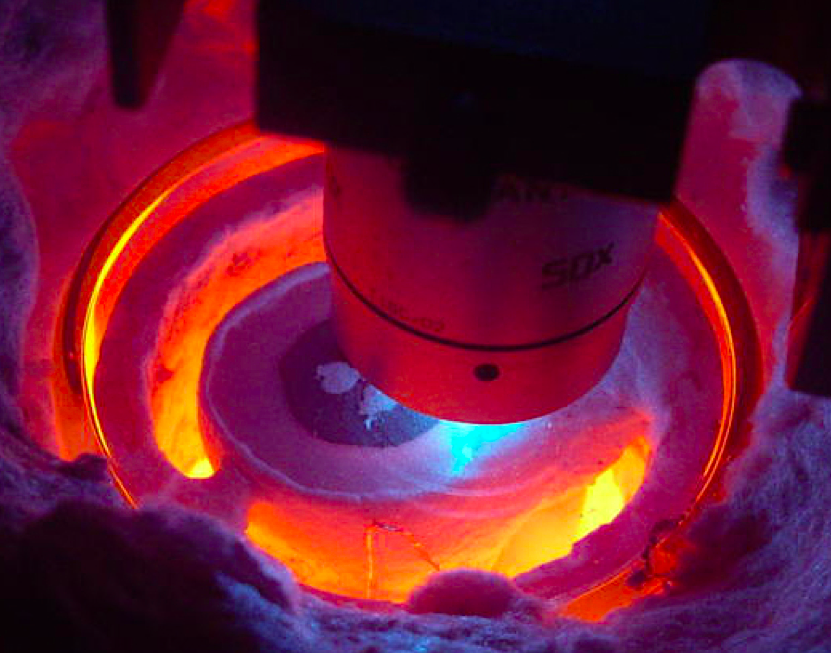
Figure. The Walker Research Group uses optical methods to study material structure and electrocatalytic activity on high temperature surfaces. Figure shows an electrocatalytic electrode at 715˚C being probed with vibrational Raman microscopy.
Professor Rob Walker and his team are using operando optical methods coupled with traditional electrochemical techniques to identify conditions that improve electrolyte durability and resilience. Specifically, the Walker Research Group is studying material changes in LLZO (Li 7 La 3 Zr 2 O 12 ) Li-ion conducting electrolytes and other battery-related materials at high temperatures using vibrational spectroscopy, thermal imaging and ellipsometry. In order to create LLZO’s highly conductive cubic structure (cLLZO), the material must be heated to temperatures above 600˚C and/or be doped with small amounts of secondary materials such as Al or Ta. The less conductive tetragonal structure (tLLZO) is more thermodynamically stable at tempertures ≤ 600˚C, and cLLZO to tLLZO conversion is one of the primary material challenges limiting solid state Li-ion battery development. Walker and his team use the different optical signatures of cLLZO and tLLZO to quantify how the cLLZO structure can be preserved at temperatures relevant for Li + battery operation and under large applied polarizations encountered during rapid discharge/recharge applications. Of particular interest is discovering ways to preserve and - if possible - reconstitute the cLLZO structure when conversion to tLLZO is first detected.
Top